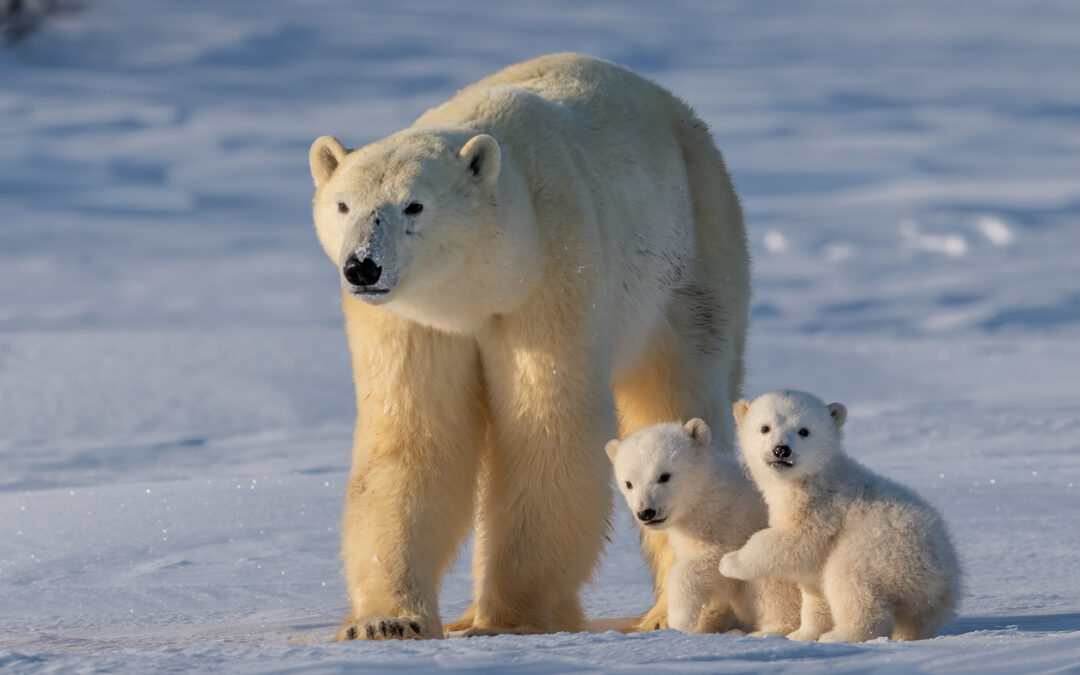A new study released this week reports that scientists can now measure the impact that greenhouse gas emissions have on polar bear cub survival. This is vital because although scientists have known for years that a lack of sea ice could be devastating for polar bears, there was no methodology in place to quantify the specific effect that human-caused climate change had on the iconic species.
According to the study:
‘In 2008, projections that up to two-thirds of the world’s polar bears could disappear by mid-century (1) led to polar bears becoming the first species listed under the US Endangered Species Act (ESA) because of threats from anthropogenic climate warming. Updated analyses (2) corroborated the 2008 projections and showed a linear but inverse relationship between Arctic sea ice extent and global mean temperature. Despite the relationship between warming and sea ice loss, absence of a quantitative link between anthropogenic greenhouse gas (GHG) emissions, sea ice loss, and declining polar bear vital rates has foiled full ESA implementation for polar bears. By quantifying the relationship between anthropogenic GHG emissions and polar bear recruitment, we show that sensitivities to cumulative anthropogenic emissions explain observed population trends, allow estimation of demographic impacts from new emissions sources, and enable ESA procedures to assess global warming impacts of proposed actions—along with impacts on the ground.”
You can read the study here (full access may require a subscription).

